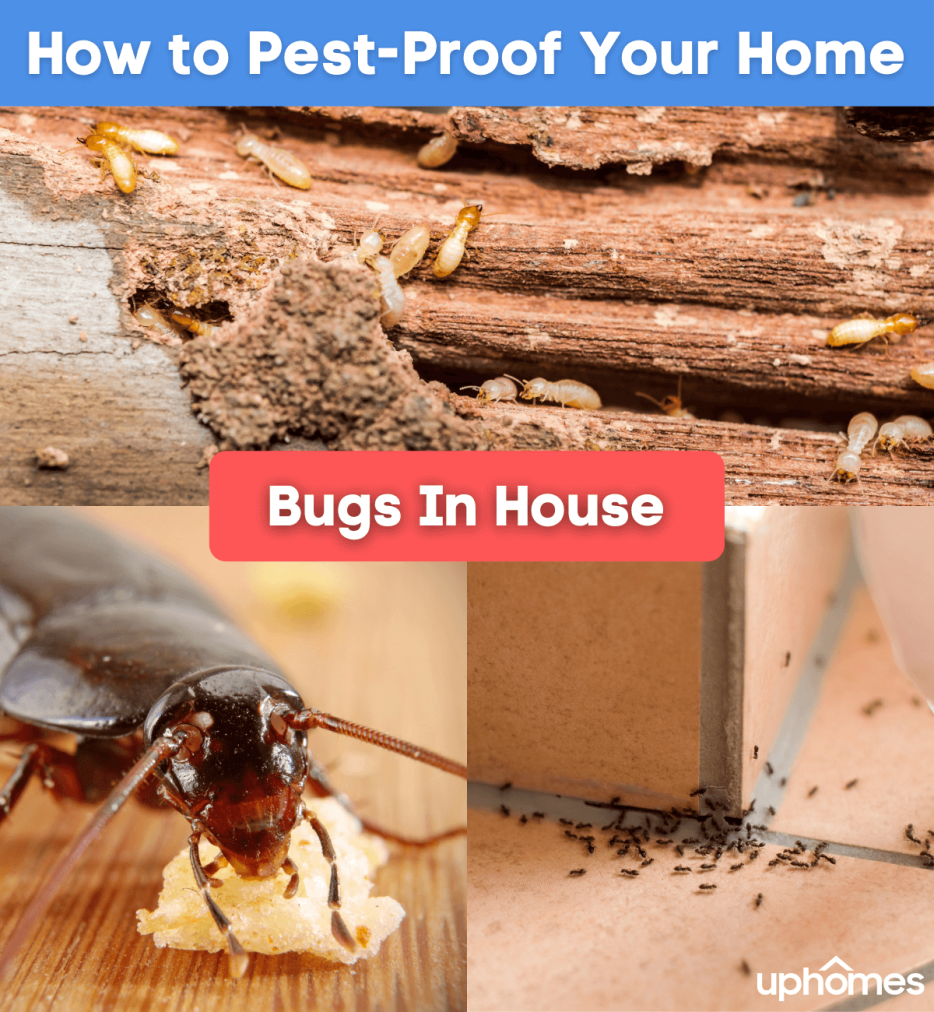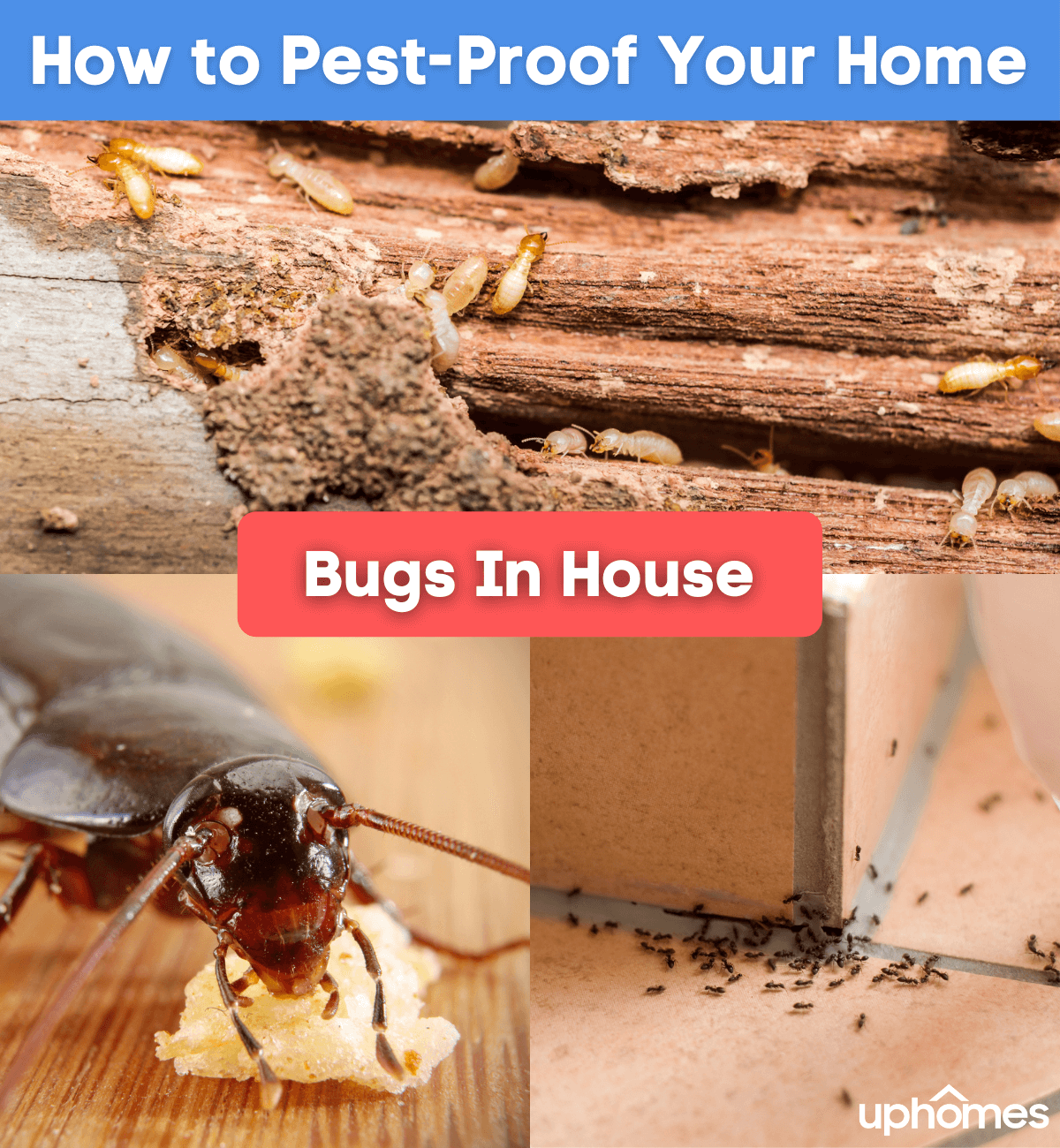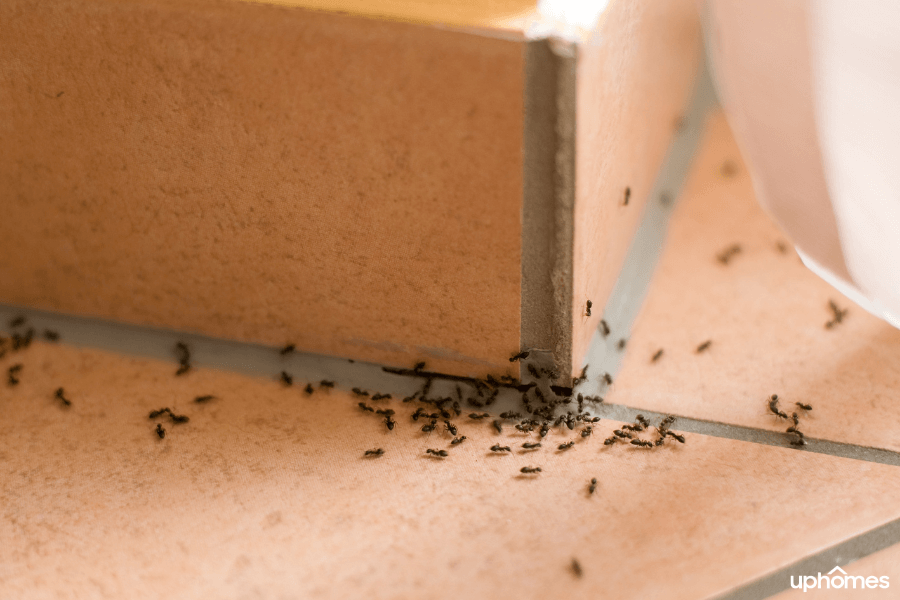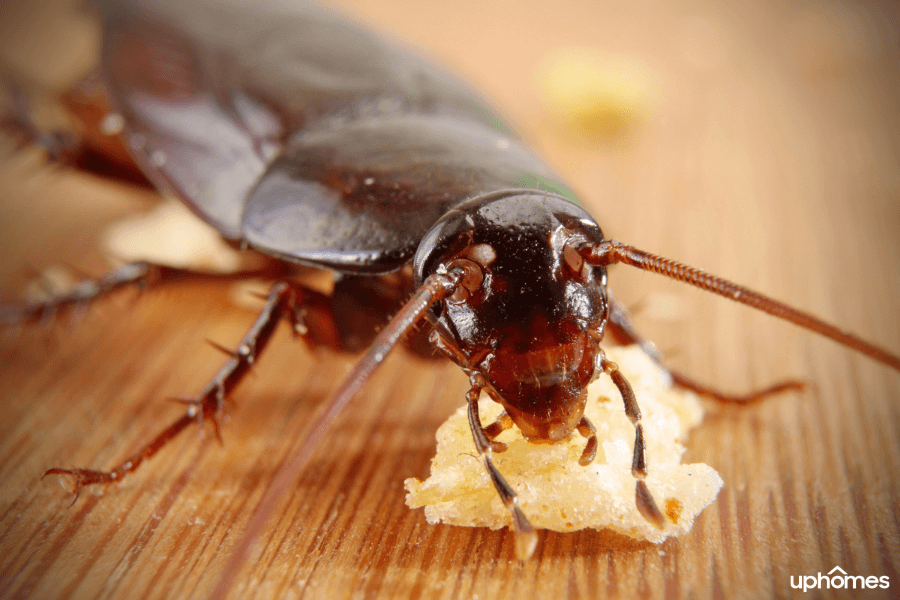March 20th, 2021


Bugs in House: How to Pest-Proof Your Home
No matter where you live in the country, one this is for certain: Bugs will find their way into your house. While most bugs are small and harmless, having them in your home is not an ideal situation. When there is one bug, there are many. Often drawn indoors to escape colder weather or rainy days, there are common types of household bugs that seem to find their way inside. Seeing them outside is no big deal but once they reach the threshold of your home, it is time to take action. Some pests are worse than others and that is a big reason why many potential homebuyers will conduct a thorough pest inspection after going under contract on a home.
Since most homeowners do not want an insect as a roommate, it may be time to pest-proof your home.
How Do Bugs Find Their Way Inside a House?
There are many pest control services available that provide treatments year-round to your home. While most of the time these treatments work, you might still notice that bugs are still finding their way inside. If you keep your windows and doors closed, you might be wondering how these bugs have managed to learn ninja skills to enter your home. While these bugs do operate on stealth mode, there are many ways that insects can crawl inside your home. If you're buying a new construction home there's a good chance the bug or pest may have snuck in during the building phase.
Doors and windows
If your doors or windows are not sealed tightly closed, bugs can find a way inside. If you notice that you can see light coming through your door then you need to replace your door sweeps or get a completely new door. Check your windows for worn weather-stripping or holes.
Walls
Bugs love to climb through your walls in between cables, plumbing, and ventilation systems. Seal any possible entry and make sure to caulk any holes.
Siding
Any opening in the siding of your home means that bugs can get into your walls. Seal and fix any gaps.
TheCrawlSpace
The crawl space under a home is an easy opening for bugs. If there are any holes in the crawl space screen under the flooring then a bug can crawl up.
DryerVents
Vents from the dryer or any vents that lead outside are another possible culprit for bugs entering the home. Check all vents for flaws.
The Chimney
If your home has a chimney, this is an obvious opening for bugs to get inside. Small animals can also make their way indoors. To avoid all of this make sure that your chimney cap is installed properly.
Common Bugs Found Indoors
Unless you are an entomologist, bugs probably creep you out. While any bug can possibly find its way inside your home, there are certain insects that are found indoors most often. Check out these bugs that might be lurking in your house right now.

Ants
One of the most common bug sightings inside, ants are attracted to your food crumbs. Not only do they love to eat your leftovers but they are frequently drawn inside due to weather conditions. If it is a cold and rainy season or even hot and dry, expect to see a few ants hanging around.
Beetles
These little insects love hanging out in your pantry and feasting on your dried foods. There are also carpet beetles that live in your carpets, wool clothes, and lint.
Centipedes
Talk about long legs! Centipedes look really crazy but can actually help your home by eating other bugs such as silverfish and spiders.
Bees
Mostly found living in your roof and walls, honey bees and wasps can lead to a quick infestation. If you hear any buzzing or see them flying around your house it is best to call in experts.
Cockroaches
This pest is the bug that never seems to die. Cockroaches are the dinosaurs of the insect world and can cause health issues while spreading bacteria. Multiplying at rapid rates, cockroaches seem to be everywhere.

Spiders
Most spiders in the home are super tiny and look scarier than they actually are. Often found in corners and windowsills, spiders can help kill other bugs in the home.
Silverfish
Active at night and known to eat all types of paper and cardboard, these little bugs are commonly found inside and tend to keep a low profile.
How to Pest-Proof Your Home
A recent study has found that the average home has a total of about 100 different kinds of bugs living in it! That is a lot of insects. Most of these bugs are so microscopic that homeowners never even notice them. But the ones that are noticed are not very welcomed. When you're buying a home bugs are one thing you want to look for! While it may be almost impossible to completely debug your home, there are ways to pest-proof inside in order to avoid infestations. There is a reason that pests are one of the top things inspectors look forand appraisers too!
As the weather gets warmer and pests decide to hang out inside, the goal is to limit the number of bugs that actually make it indoors. If bugs are an issue for your home, find a good pest control company that will stop by periodically to help. The one thing about bugs is that they are extremely resilient. While this may be an admirable trait in other circumstances, it may be a good idea to pest-proof your home on your own in between pest control company treatments.
Try out these secrets towards pest-proofing your household that keep affordability and convenience in mind!
Seal any openings
Back to how bugs find their way inside your home, the first step towards pest control is to seal and fix any openings that a bug can get through. Check any doors, windows, vents, siding, walls, roof, and crawl space for openings. Consider any overlooked area and fix any weaknesses as soon as possible. Update weatherstripping, keep window screens in mind when opening windows, and keep the garage door closed when not in use. Weatherstripping can be found everywhere and is cheap to buy. Do not forget that a good caulk goes a long way.
Keep your kitchen clean and organized
One of the main reasons that bugs are drawn inside is for the food in your kitchen. Drawn towards crumbs and leftovers, ants in particular love snacking. With this in mind, make sure that food is well packaged, containers are cleaned, counters are wiped down, and trash cans are rinsed regularly. Vacuuming and sweeping often can ensure that crumbs and any possible bug food sources are cleaned up. Any sugary and sweet substances seem to attract bugs the most.
Store Firewood far from the House
Firewood that is stored outside is a bug infestation waiting to happen. Any wood that has been outside on the ground for a long period of time becomes the home to tons of tiny little insects. If this firewood is kept close to your house or near siding, these bugs can make their way into your home. A general tip is to keep firewood at least five feet away from the house to ensure that the bugs living on it stay away. No one wants critters eating through the foundation of their home.
Make a Birdhouse
If you always wanted to make a birdhouse then now is the time to do it. Decorate it, paint it, and make it cute. Not only are birds super adorable and fun to watch, but the main food source of their diet is insects. Hang a bird feeder and put in a birdbath. Make your home the bird’s favorite house on the block. When birds are around they will eat the bugs for you.
.png)
Keep your Home Dry
Pests thrive in damp environments. If you are around any body of water you will notice that there a bunch of insects. The same goes for your house. If there is a leaking pipe or if there are wet spots and cracks around sinks, then bugs will be attracted to your home. Resolve any issues and keep your house dry.
Keep Your Pet Clean
If you are a pet owner, most of the time you do not think about what your furry friend could be bringing into the house. When you let your fluffy dog outside, bugs can be attaching themselves to its fur and hitching a ride indoors. While dogs and cats can eat bugs for you, any pet food or treats left on the floor can be a beacon for insects. Make sure to constantly clean up after your pet and partake in regular grooming and bathing as an extra precaution. Especially if you are moving your pet to a new place.
Essential Oils
Not only do essential oils smell good but some of them actually repel insects. For any essential oil lovers out there, Peppermint oil is known to repel ants, mosquitos, and spiders. Plus, Lavender oil repels moths, fleas, flies, and mosquitos. This is a great all-natural pest control solution that will make your home smell amazing in the process. Set up anessential oil diffuser in your house today.
Set Out Traps
Sticky traps are easy to come by and are a practical solution to getting rid of bugs in your home. Found in all shapes and sizes, traps can be set all over the place. If you have fruit flies, another option is to set out apple cider vinegar. Fruit flies are drawn to the vinegar but can not get out once they land.
Pest-proofing your home is an essential step towards a pest-free life. If you follow any of the tips above, bugs will hopefully stay outside. The best thing to do is to stop any bugs from coming inside your home before they even have a chance to think about it. If a bug does find its way indoors, do not panic. Determine what type of bug it is and figure out where it could have come from. Pest-proof your home often and do not hesitate to call in the experts.
Final thoughts on keeping Bugsout ofthe House:
If you have bugs in the house we hope this article helps you to keep them out! Whether you'reliving ina luxury home or any property type for that matter, bugs will find their way into your house. If you find that the bugs are becoming tough to control you will either want to explore contacting an exterminator or finding some stronger solutions on the web!

Ryan Fitzgerald
Hi there! My name is Ryan Fitzgerald, and I am a REALTOR®. My goal is to help you learn more about real estate through our Real Estate Blog! Hopefully, you enjoyed the above blog post and it found a way to provide help or value to you. When you're ready to buy or sell a home of your own let us know here. Please feel free to join the conversation by dropping us a comment below.

